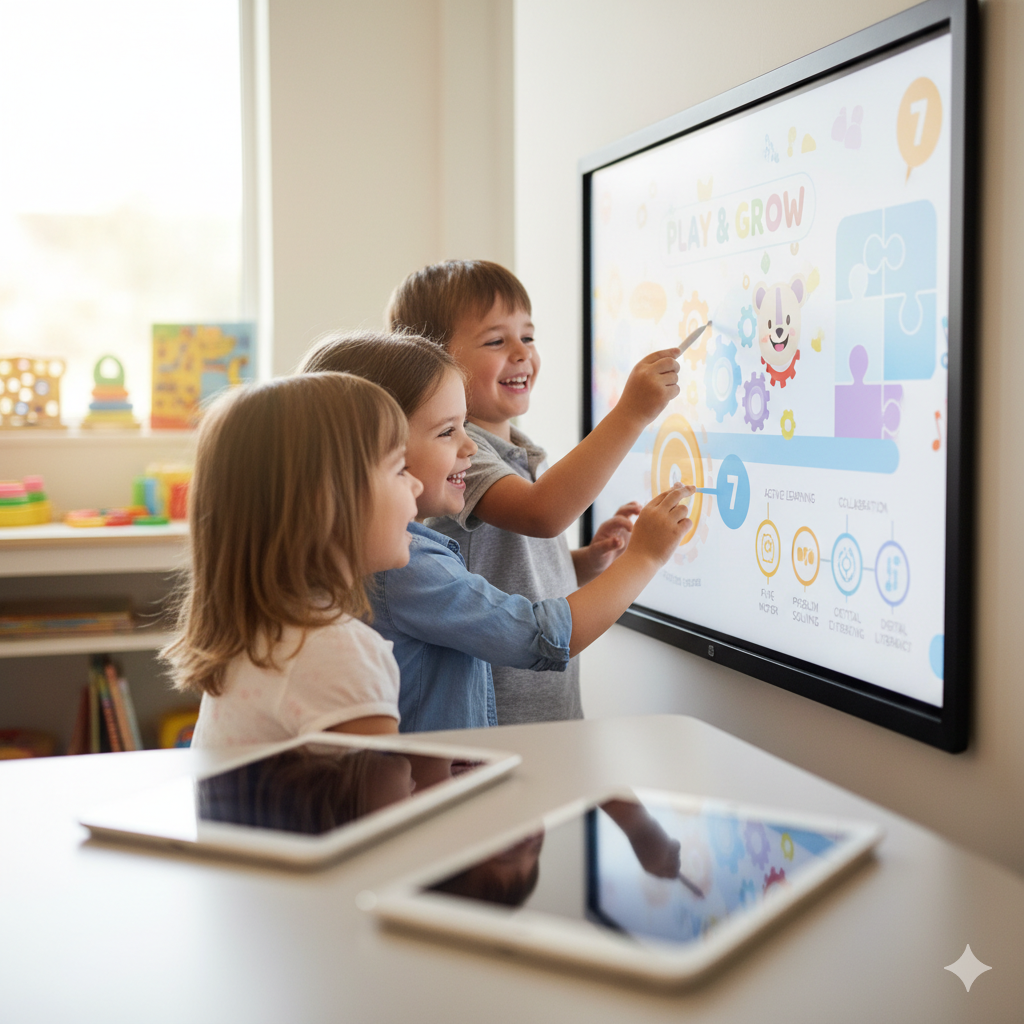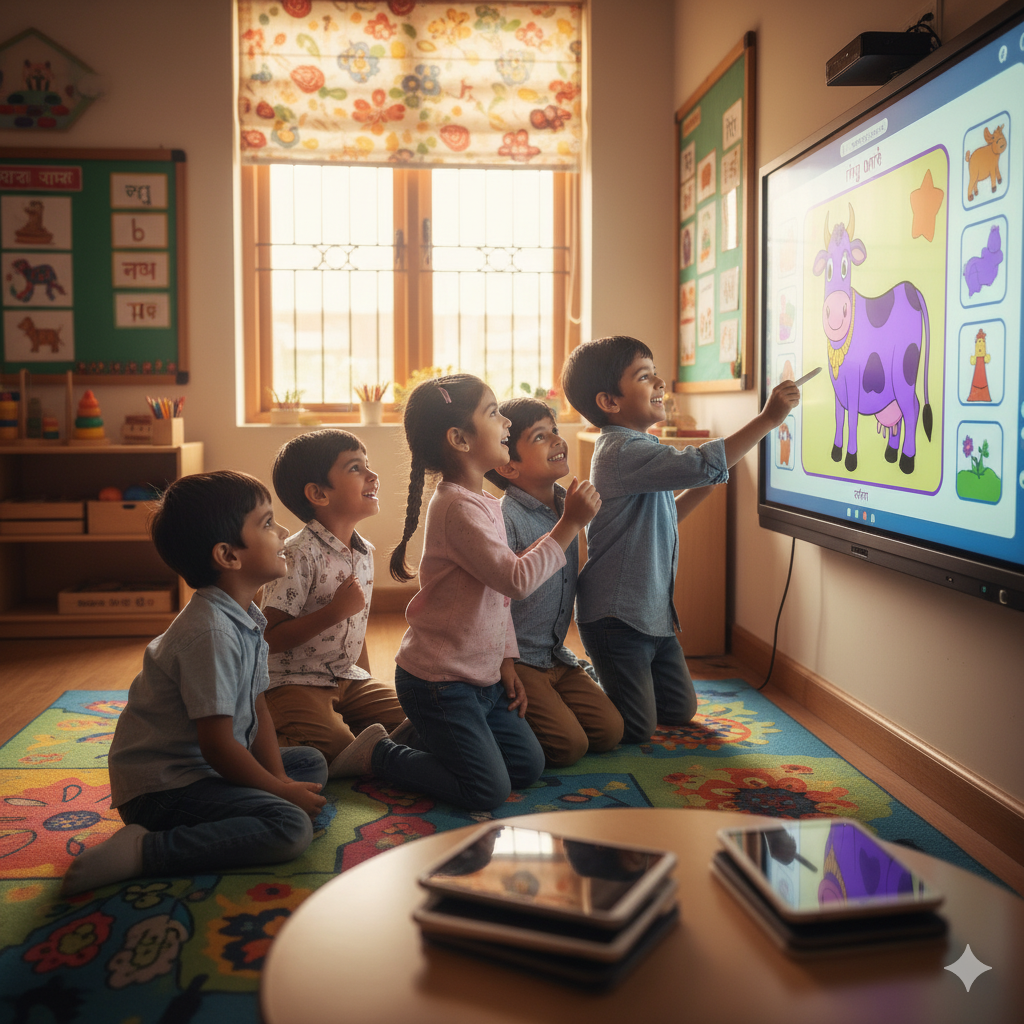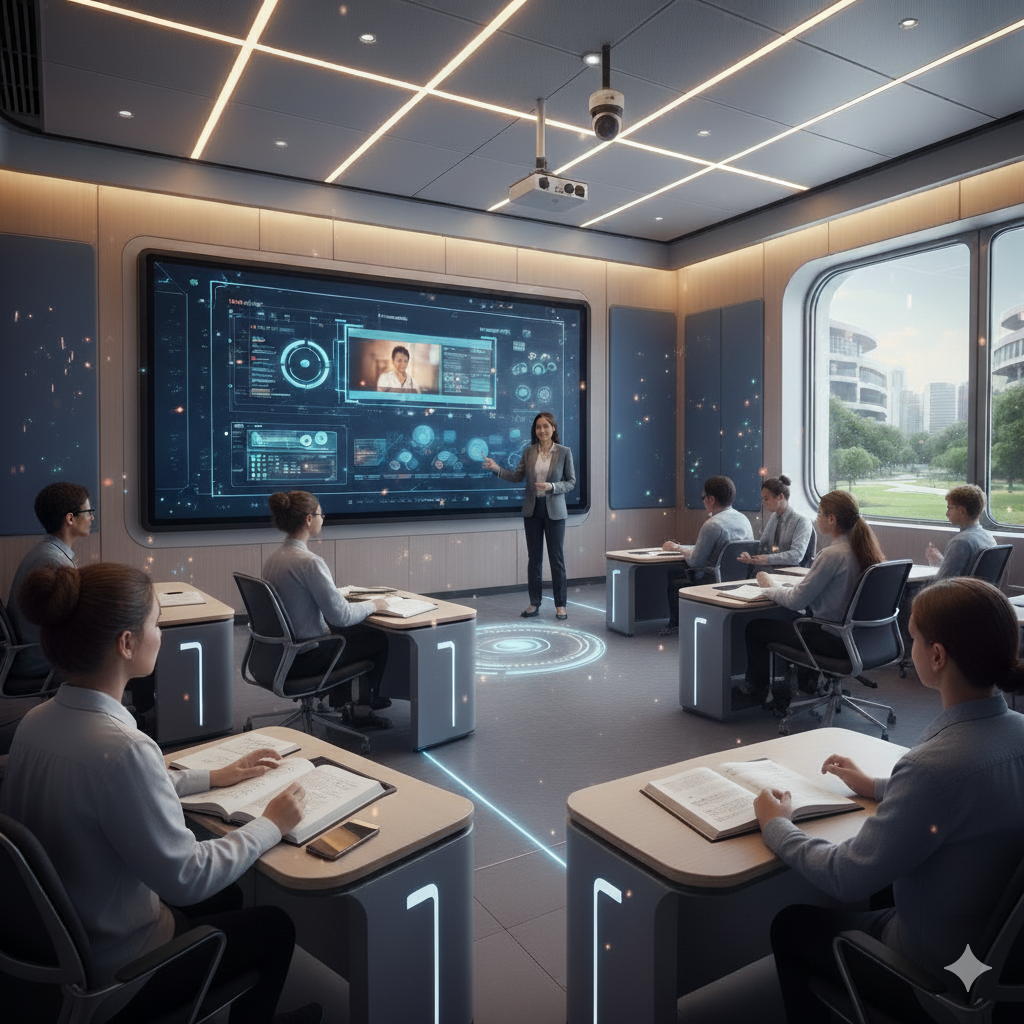7 Ways an Interactive Screen Develops Skills Preschool Tablets Can’t

Walk into a modern preschool today, and you’ll see the glow of tablets. It’s easy to understand why they’ve become common. They’re portable, packed with seemingly educational apps, and they keep children quietly engaged. But as educators, we have to ask a tough question: Is a quiet classroom always a learning classroom? The truth is, tablets are designed for one user, creating a room full of children in their own little digital bubbles.
An interactive smart board for a classroom, however, is designed for the community. It pulls children out of those bubbles and brings them together to a shared space for discovery. It transforms the front of the room into a dynamic canvas for messy, exciting, group-driven learning. For schools that are serious about building the foundational skills children actually need, an interactive screen isn't just another piece of tech. It's a fundamentally different and smarter investment in their future.
7 Reasons to Choose an Interactive Screen Over Tablets for Preschools
1. Collaboration Skills Beyond Individual Screens

There’s a different sound in a classroom when children gather around a single, large screen versus one where they are all on individual tablets. The interactive screen, on the other hand, is buzzing with the sounds of learning: "My turn!" "No, put that piece over here!" "Let's make the cow purple!"
This is where real collaboration is born. A tablet, by its nature, is a solo journey. But on a shared interactive board, children have to negotiate, communicate, and work together. They learn to respect a friend's idea, to solve a problem as a team, and to celebrate a group's success. These aren't abstract concepts. They are vital life skills being practiced in real-time, all before the lesson has even finished.
2. Stronger Motor Development With Large Interactive Surfaces
Early childhood is a time of constant motion. Children learn through their bodies. A tablet confines this learning to a tiny set of movements. The precise, isolated swipe of a single finger. While this develops fine motor skills, it neglects the bigger picture of a child’s physical growth.
A smart board for a classroom invites whole-body learning. To draw a sun, a child stretches their arm high and makes a big, sweeping circle. To solve a matching game, they might take a step to the side to point out an answer. This dynamic interaction engages the small muscles in their hands and the large muscle groups that are critical for coordination, balance, and strength. It makes learning a physical activity, weaving movement into the very fabric of the lesson.
3. Better Classroom Focus for Teachers
Trying to manage a room full of preschoolers on individual tablets is a recipe for distraction. It turns the teacher into a tech-support specialist, constantly checking to see who has wandered off into a game. It can disturb the focus of the entire class.
An interactive screen brings everyone back to the same page—literally. It creates a single, shared focal point, allowing the teacher to guide the lesson as a unified experience. This structure makes classroom management more like conducting an orchestra. It also reassures parents that screen time in the classroom is purposeful and guided.
4. Improved Attention vs. Tablet Distraction
A tablet is a portal to endless distractions. The most well-designed learning app is always just one accidental tap away from a cartoon or a noisy game. For a young child still developing the ability to concentrate, this digital rabbit hole is a constant threat to their focus.
An interactive screen is a walled garden of learning. The teacher curates the experience, ensuring every video, image, and activity serves a clear educational purpose. There are no pop-ups, no unrelated app suggestions. This controlled environment is the perfect training ground for building a child’s attention span, teaching them to engage deeply with a task without being pulled in a dozen different directions.
5. Multi-Sensory Learning That Scales With Age
A tablet offers a limited sensory window. An interactive board throws the doors wide open. It’s a multi-sensory playground where children can learn through touch, sound, and sight on a grand scale. They can "finger-paint" with a rainbow of colors, hear a lion roar when they touch its picture, and watch a story unfold as a group.
Unlike tablets that may require frequent repairs or replacements, interactive screens are built to handle daily preschool use, from group activities to active play-based lessons. Teachers can adapt the same board for storytelling, phonics, number games, or art activities, ensuring it stays useful across different stages of preschool learning. For school owners, this means one reliable investment that reduces recurring costs while consistently enriching the classroom experience.
6. Social-Emotional Development in Shared Learning
So much of preschool is about learning to be a good human—how to share, how to wait your turn, how to feel proud of a friend’s success. The solitary nature of tablets can starve children of the very interactions they need to develop these skills.
A shared interactive screen is a natural incubator for social-emotional growth. Group activities on the board require children to practice patience and empathy. They learn to celebrate a classmate’s contribution and offer help when someone is struggling. For a shy child, adding their small mark to a large group drawing can be a safe and powerful way to participate. It turns learning into a communal act, building confidence and kindness with every shared touch.
7. Future-Ready Digital Classroom Integration
In the ever-changing world of education, tablets can feel like a temporary fix. They’re useful, but they are ultimately satellite devices that don’t form the core of a modern learning environment.
An interactive board is the anchor of a true digital classroom. It’s designed to be the central hub that connects to a whole ecosystem of learning tools. By investing in it, a school is building the foundation for a future-ready classroom that is integrated, robust, and prepared for a digital-first future.
Key Takeaway
The choice isn't really about technology. It's about pedagogy. Tablets offer an experience that is individual and content-driven. An interactive screen fosters an environment that is collaborative, creative, and community-driven. By choosing to build a classroom around a shared, interactive hub, you are preparing children not just to consume information but to learn how to create, communicate, and solve problems together.
Explore Roombr Digital Classroom Designed for Preschools
Transform preschool learning like never before with Roombr’s 120" and 200" interactive screens. Designed for play-based, skill-focused lessons, these large screens help children develop cognitive, social, and motor skills far beyond what tablets can achieve. Safe, durable, and teacher-friendly, Roombr makes every lesson engaging and interactive.
Schedule a free demo to understand how our digital classroom technology can transform teaching and learning in your preschool classroom.
Foziya Abuwala
Share
Step Into the future of
Education with Roombr

















